
Lot 36
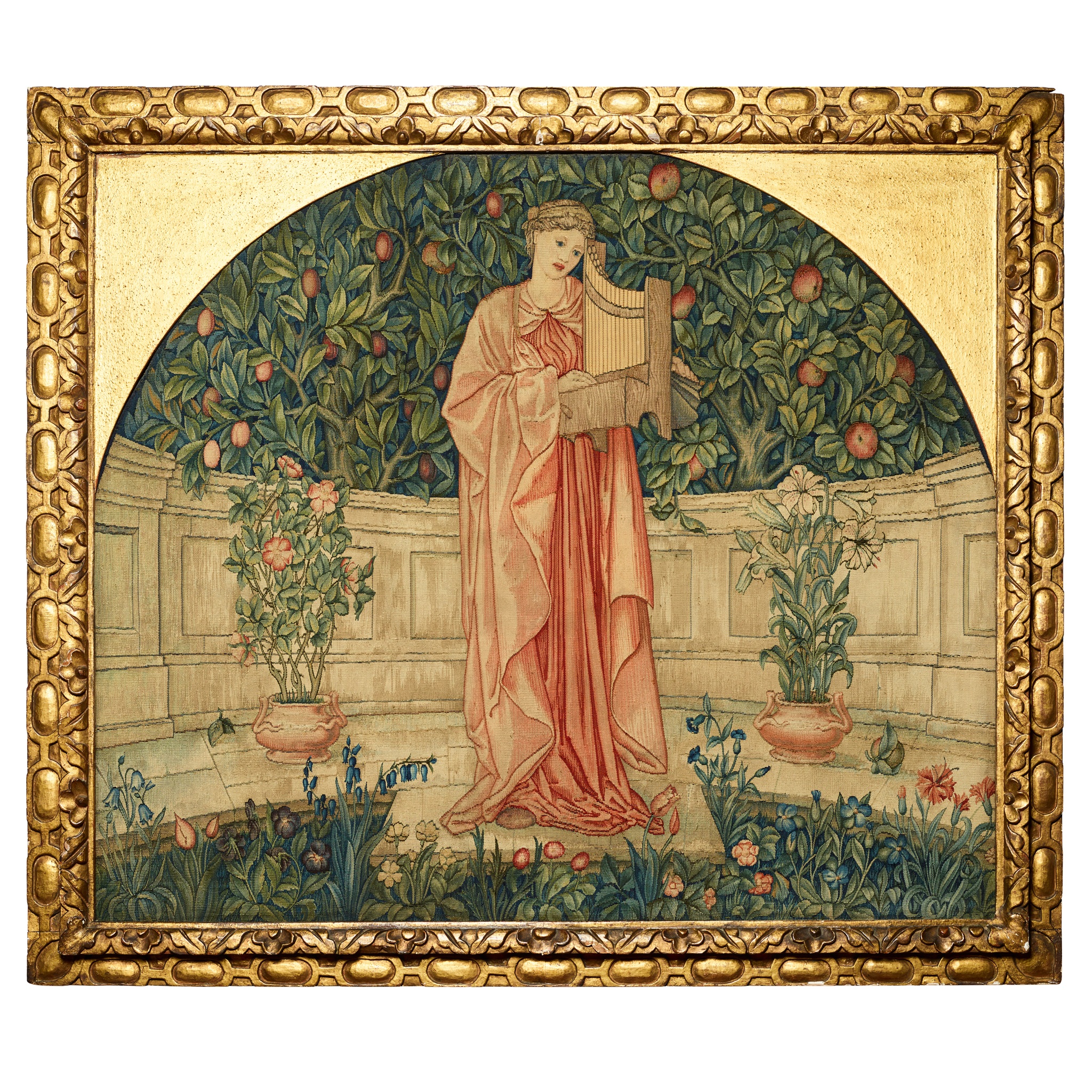
SIR EDWARD BURNE-JONES (1833-1898) AND JOHN HENRY DEARLE (1859-1932) FOR MORRIS & CO.
'ST CECILIA' TAPESTRY, 1888
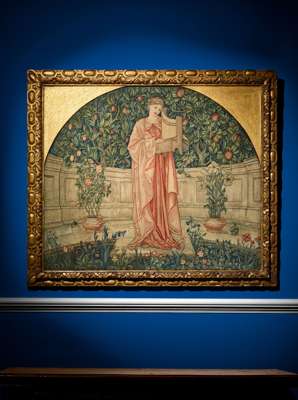
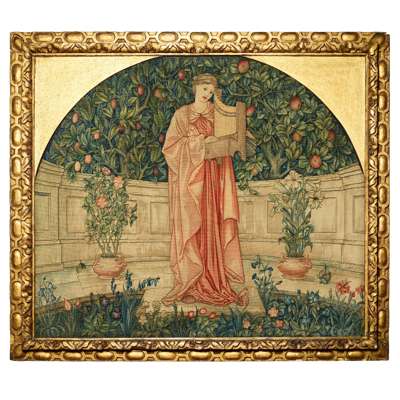
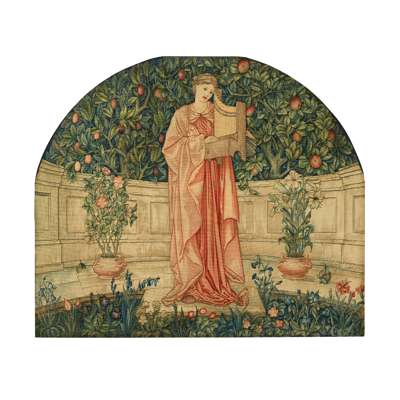


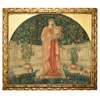
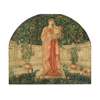

Auction: Day One | Lots 1 to 252 | Wednesday 16th April from 10am
Description
lunette, wool and silk, within carved giltwood frame
Dimensions
99cm x 117cm (frame size 116.5cm x 135cm)
Provenance
Provenance: Commissioned by Mrs. Playfair, circa 1888
Morris & Company
Mrs. Lucius Gubbins and by descent
Footnote
Literature: The Revival of Tapestry-Weaving, An Interview with Mr William Morris, The Studio, no. 16 (July 1894), p. 100,
Vallance A. William Morris His Art His Writings and His Public Life, London 1898, pp. 119-121
Marillier H.C. History of the Merton Abbey Tapestry Works, London, 1927, pp. 18-20, illustrated pl. 12
Wilhide E. William Morris: Decor and Design, Harry N. Abrams 1991, p.107, where this tapestry is illustrated
The original drawing for this figure is held in the collections of the Huntington Library, San Marino, California (2000.5.1525E William Morris Collection)
Sewter A. Charles The Stained Glass of William Morris and his Circle- A Catalogue, Yale University Press 1975, p.42
Sewter A. Charles The Stained Glass of William Morris and his Circle, Yale University Press 1974, pl. 413
In his 1893 essay Textiles, William Morris called tapestry “the noblest of the weaving arts,” highlighting the importance of “elegance of the silhouette” and “crispness and abundance of beautiful detail” in a successful design—qualities that St Cecilia certainly embodies.
The final design for St Cecilia was a collaboration between Edward Burne-Jones and Henry Dearle, a former pupil of William Morris who later became the chief designer for Morris & Co. in 1890. Burne-Jones created the figure, while Dearle designed the fruit trees and balustrade. The design for this version of St Cecilia was first used in a stained-glass window for Morris & Co. in 1873, which now features in the South transept window of Jesus College Chapel, Cambridge. The figure is nearly identical to the St Cecilia in the tapestry offered here in terms of pose, drapery, and expression, and was chosen for the simplicity of the drapery. A slightly different version of St Cecilia was woven a year earlier, in 1887, as part of a series of seven single-figure panel tapestries, also adapted from existing Burne-Jones stained-glass designs. Like those works, this lunette includes Burne-Jones' figure set within Dearle’s intricate millefleur flower and foliage patterns, with the curved balustrade helping to delineate the figure.
St Cecilia was woven in 1888 by William Sleath at Morris & Co.’s Merton Abbey Works. The company had moved there in 1881 to accommodate larger dye vats and weaving looms, each operated by up to three workers. Sleath, one of the first apprentices taken on at Merton Abbey, was an experienced weaver by the time he created this tapestry. According to records kept by Morris & Co.’s last managing director, H. C. Marillier, the 1888 St Cecilia was commissioned by Mrs. Playfair.
In the early part of the 20th century, Morris & Co. bought back the tapestry, a not-uncommon practice for pieces they had manufactured. St Cecilia was then purchased by the prolific patron of the firm, the New Zealand-born Mrs. Lucius Gubbins, who furnished her Eastbourne home with Morris pieces. It is from her descendants that this tapestry now comes to sale.







